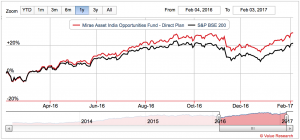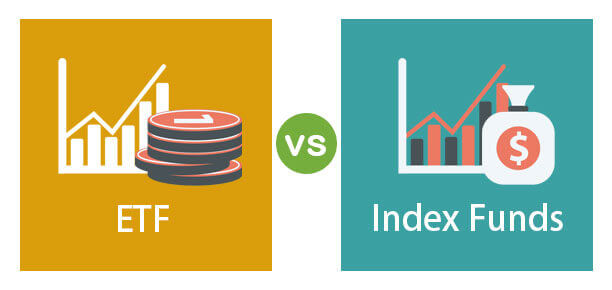Investing strategies of one can change his/her return, in the long run, more than one could expect. Active vs passive investing decision making gets into the picture the moment one decides to invest in the equity asset class. Retail investors who are looking at equities as an investment opportunity have two options, either invest directly or indirectly through mutual funds. While looking into mutual funds one can invest either in an actively managed fund or passively managed fund. Let us try to understand the difference between them.
Active vs Passive investing

The difference between active and passive investment lies in the aim to beat the overall market returns. For active fund investors, they invest in funds that are actively managed by fund managers to generate excess returns than the average return delivered by the index they are tracking. It refers to this excess return as alpha. As for as passive investors are concerned, they do not want to beat the index but mimic the return generated by the index they are tracking, respectively.
In both styles of investing, the investor has to incur a certain amount as fees to the fund manager. This fee is charged higher in the actively managed fund than passive funds since active funds seek more attention from the fund manager in the process of creating alpha. But whereas in passive investing where the work of fund manager lies mostly in tracking the index perfectly incurs a lesser charge than active funds.
Active mutual funds
Active funds are classified based upon the strategy they are using for generating alpha, they are popularly referred by the market capitalization category of funds in which they are investing such as large, mid, small, or multi-cap funds. They are also classified based on the reinvestment policy in which dividends are reinvested for fuelling returns are called growth funds and funds which return dividends to its fund holders are known as regular income funds. Most of these funds are open-ended funds where investors can invest and redeem at whatever point of time. Investments are done regularly through SIP. Let us look into the performance of actively managed large-cap funds.
The funds we are going to look are
1.) Axis Bluechip direct
2.) Principal nifty 100 equal weight direct
These funds were chosen to highlight the performance of the best and worst-case scenarios an investor can expect via investing in actively managed funds. This is just the case of large-cap funds and not mid or small-cap funds. The funds were chosen based upon the 5-year return generated by these funds. (Source: Value Research). These are not recommendations, it is up to the investor to judge the fund strategy and evaluate its performance.

The performance of Axis Bluechip direct (Blue) and Principal nifty 100 equal direct (Red) with their respective benchmark index Sensex 100 TRI, which is inclusive of the dividend return obtained from its components is also included since these are growth funds in which the received dividends are reinvested. For year on year return click here.
This explains the risk of investing in an actively managed fund. We can either expect a return above the index or fail to even match the returns of the index due to higher risk. And the costs (Fund manager commission) associated with these funds are usually higher than index funds. They range between 2- 2.5 percentage for actively managed funds. Index funds have a lower cost structure which demands less than 1-1.5 percentage of the returns.
The errors that can happen on investing in active funds are similar to risks associated with investing directly where wrong actions can lead to below-average returns than what the overall market generated. But investors who are looking for short term investments to generate higher returns and investors who diversify between funds for long term investment mostly take such risks and invest in active funds.
How Passive funds are different?
The important part is to know the difference between “Active VS Passive investing”. Investors who accept their limitation of not having enough knowledge on identifying the right fund or stock find will find passive investing attractive. This leads towards accepting the exact market return than trying to beat it and failure. This means to follow the exact stocks and allocation of the index we are tracking and generate the exact return of the market in the period.
Long-term mutual fund investors who tend to invest mostly in passive funds believe that in the long term the annualized return of active funds would more or less be similar to the overall index and so it is unnecessary to rapidly make decisions and pay costs for every transaction we make. Thus by investing in the index we reduce costs as well as generate returns that would be more or less similar to the index value. This makes passive investors look for funds that are of the least cost. The return graph would like

To get more ideas about how returns in an index fund will be, click here.
But even passive investing is followed in two ways one is through investing in
1.) Index funds and the other is
2.) An exchange-traded fund (ETF)
What is the difference between an Index fund and an Exchange-traded fund (ETF)?

In the process of exploring Active VS Passive investing, it is a must to know about ETF vs Index funds.
Lets once again be clear either an Index fund or ETF both try to mirror the return of the respective index. An Index fund is one is like any other mutual fund except here the job of the fund manager is to track the index as perfectly as possible and reduce the tracking error.
As already mentioned the costs in such funds are between 1-1.5 percentage. These are open-ended schemes and investment through SIP mode is possible. Any transition happens after the trading hours get closed for the day and the Net Asset Value is adjusted for the closing price for the day.
But an Exchange-traded fund is very different from an Index fund even though it tries to track the underlying index. It is not an open-ended scheme where investors can invest and redeem at any point in time, these are close-ended schemes where investors can only invest while they are floated. The fund house has to necessarily make the ETF be traded in the market as like any other security. The market then starts to value the ETF in line with the index it tracks.
The advantage of an ETF over an index fund is that it has lower cost considered to index funds. The cost of ETFs is lesser than 0.5 percentage. And redemption can happen during the trading hours. The dividends are directly credited into the investor’s bank account.
The disadvantages are you cannot plan for your SIP’s in ETFs and dividends are expected to be reinvested every time by the investor themselves.
We hope you got some clarity about “Active VS Passive investing”.
Please register your views about “Active VS Passive investing” in the comment box.
To read more in management, click here.
![Active_vs_passive_investing[1] active vs passive investing](http://learndiversified.com/wp-content/plugins/a3-lazy-load/assets/images/lazy_placeholder.gif)